Most posts are either too short to say something useful,
or too long to keep attention.
The best ones strike the right balance.
We looked at the data to see where that balance actually is.
How long should a LinkedIn post be in 2025?
The hard limit for LinkedIn posts is 3,000 characters, but the sweet spot sits between 800 and 1,200 characters.
This is where you maximize your performance, but the recommendation slightly differs depending on what you aim for:
- For reach, the peak is 800–1000 characters
- For engagement, it shifts slightly higher to 1000–1200
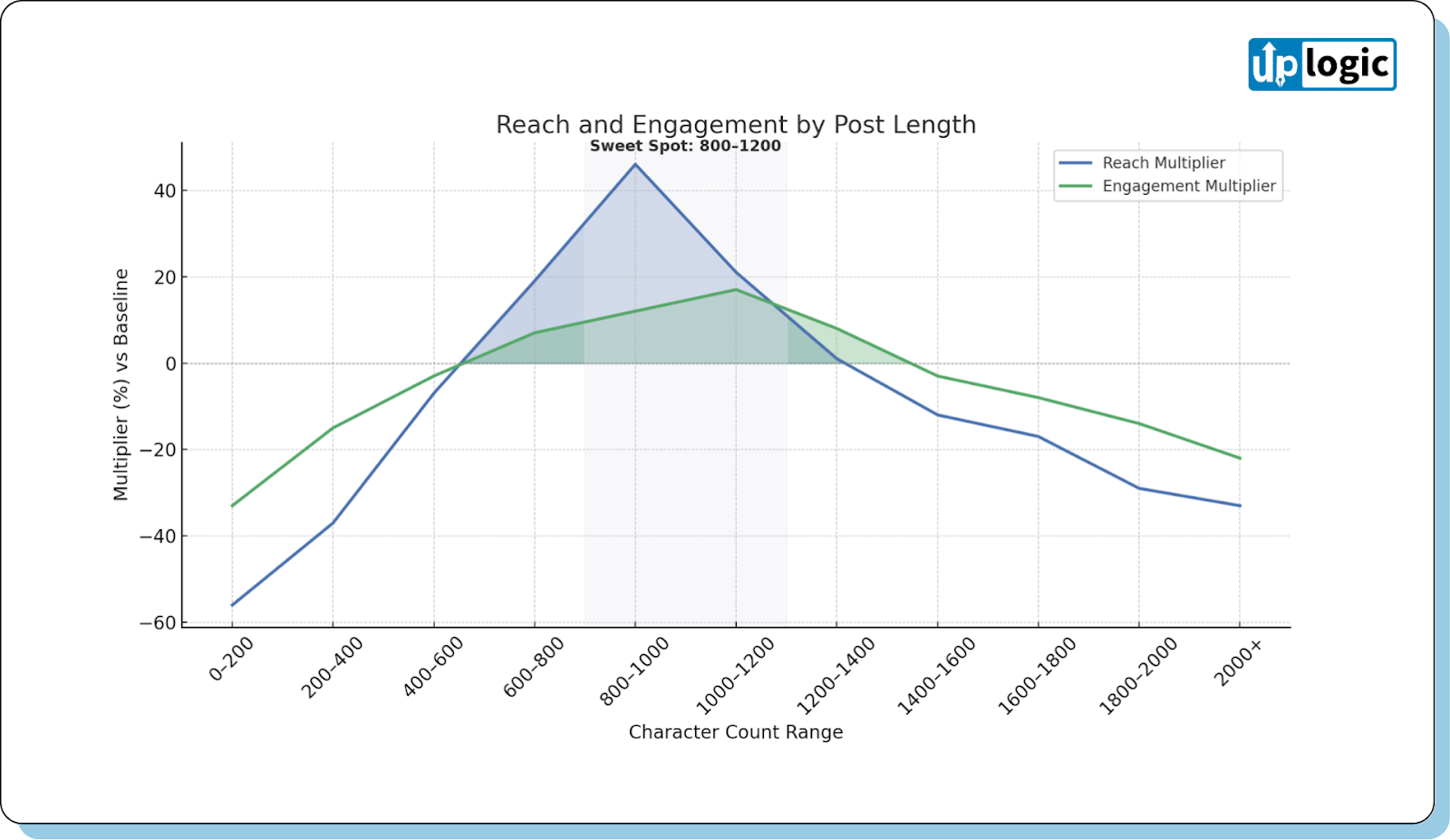
The most interesting thing to note:
Reach has a bigger variance.
We suspect engagement is partly shaped by your audience size and how familiar people are with your content. Reach, on the other hand, drops fast if the post feels low-effort (too short) or hard to read (too long).
While your own followers will forgive a suboptimal formatting, wider audiences won’t.
The longer-term trendline
In 2021, top-performing posts were 1200–1300 characters.
Now they’re 800–900. That’s a 25% drop.
At the same time, the average number of paragraphs increased from 5 to 8.
What does that mean?
People have less attention to spare. They won’t commit to reading your post upfront. Instead, they scan and pause only if something catches their eye.
Creators are adopting shorter paragraphs and a more “flighty” writing style to keep readers scanning for longer.
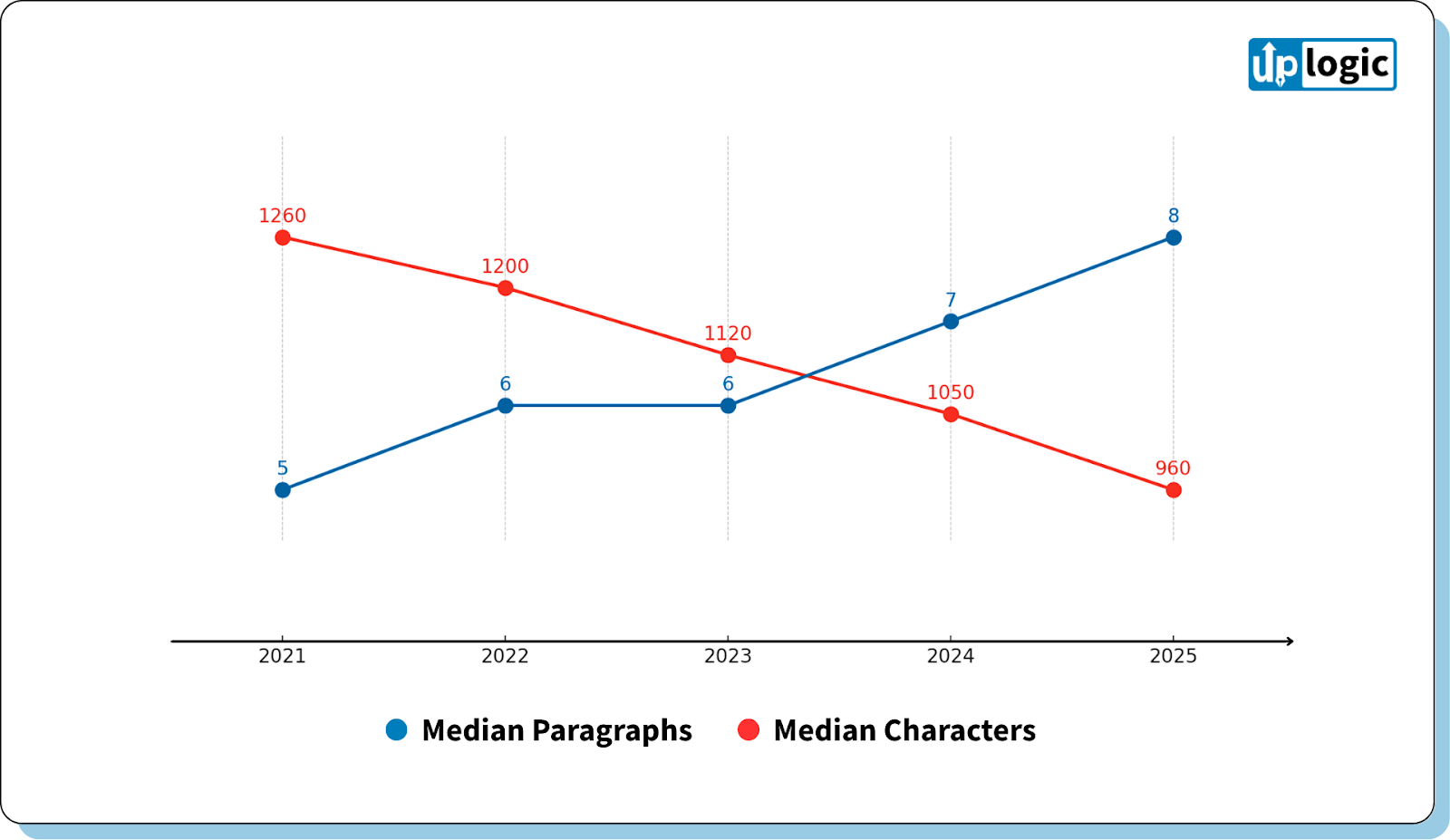
Top creators already see the trend and are ahead of the curve.
Their posts are 18% shorter (780 vs 1100 characters), but they use 50% more paragraphs (12 vs 8).
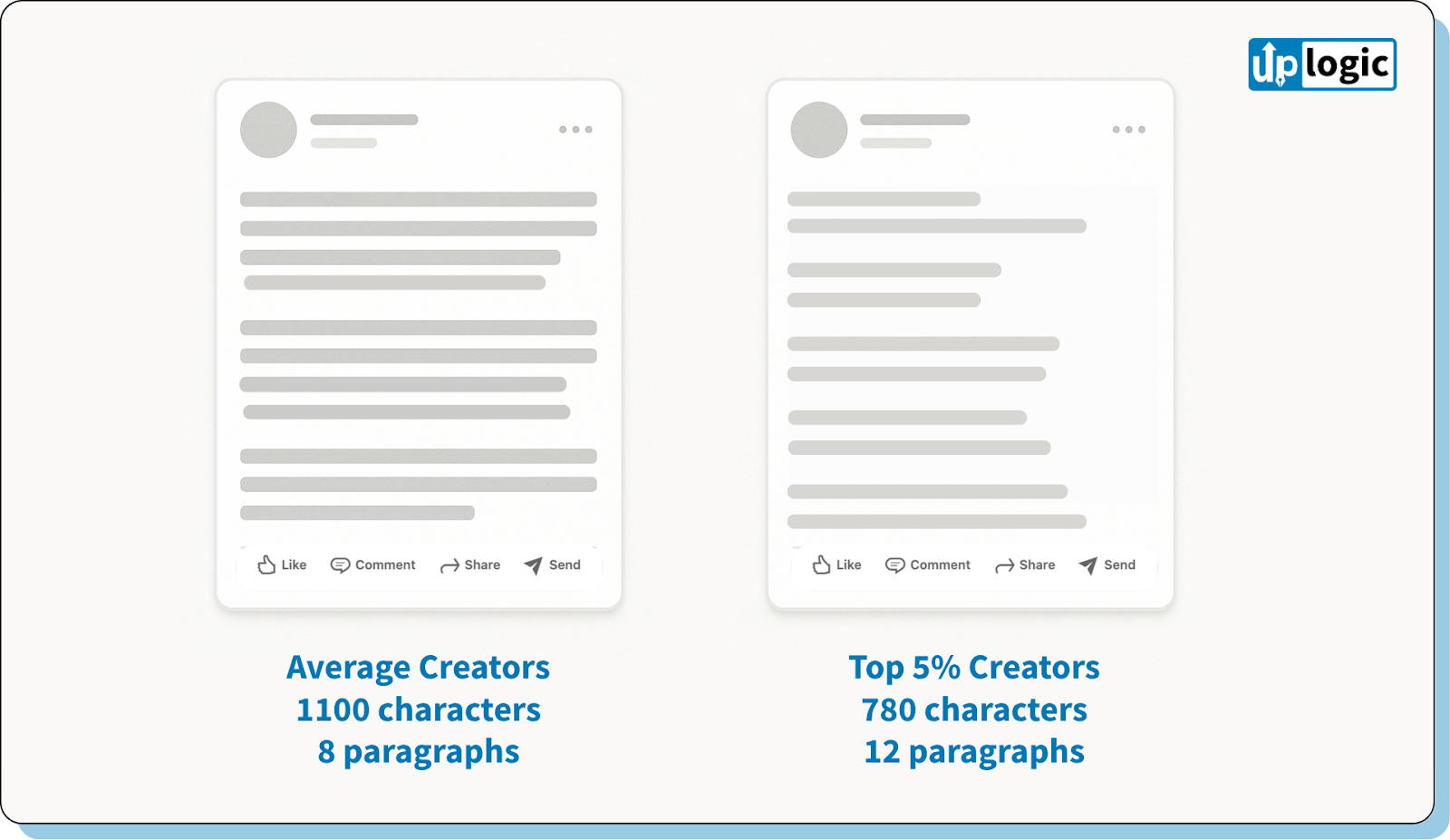
We expect post length to keep shrinking.
Attention spans won’t bounce back. Feed speed is increasing.
However, this trend isn’t without risk.
Go too short, and your post feels thin, like you didn’t try.
Go too long, and no one makes it to the end.
Most creators still haven’t adapted, and that’s where the opportunity is.
Does post length depend on content type?
Different formats are best suited to different content lengths.
- Text-only posts: The longest content type (1,200–1,400 characters). Text carries the full message
- Images: Mid-length (800–1100 characters).
- Documents: Mid-length (800–1,000) - enough context, but not a novel (you should cover what is in the PDF, not open a different topic).
- Videos: Shorter captions (600–800 characters) - the video is the main content.
- Polls: Shortest of all (400–600 characters). People read the question, vote, and move on.
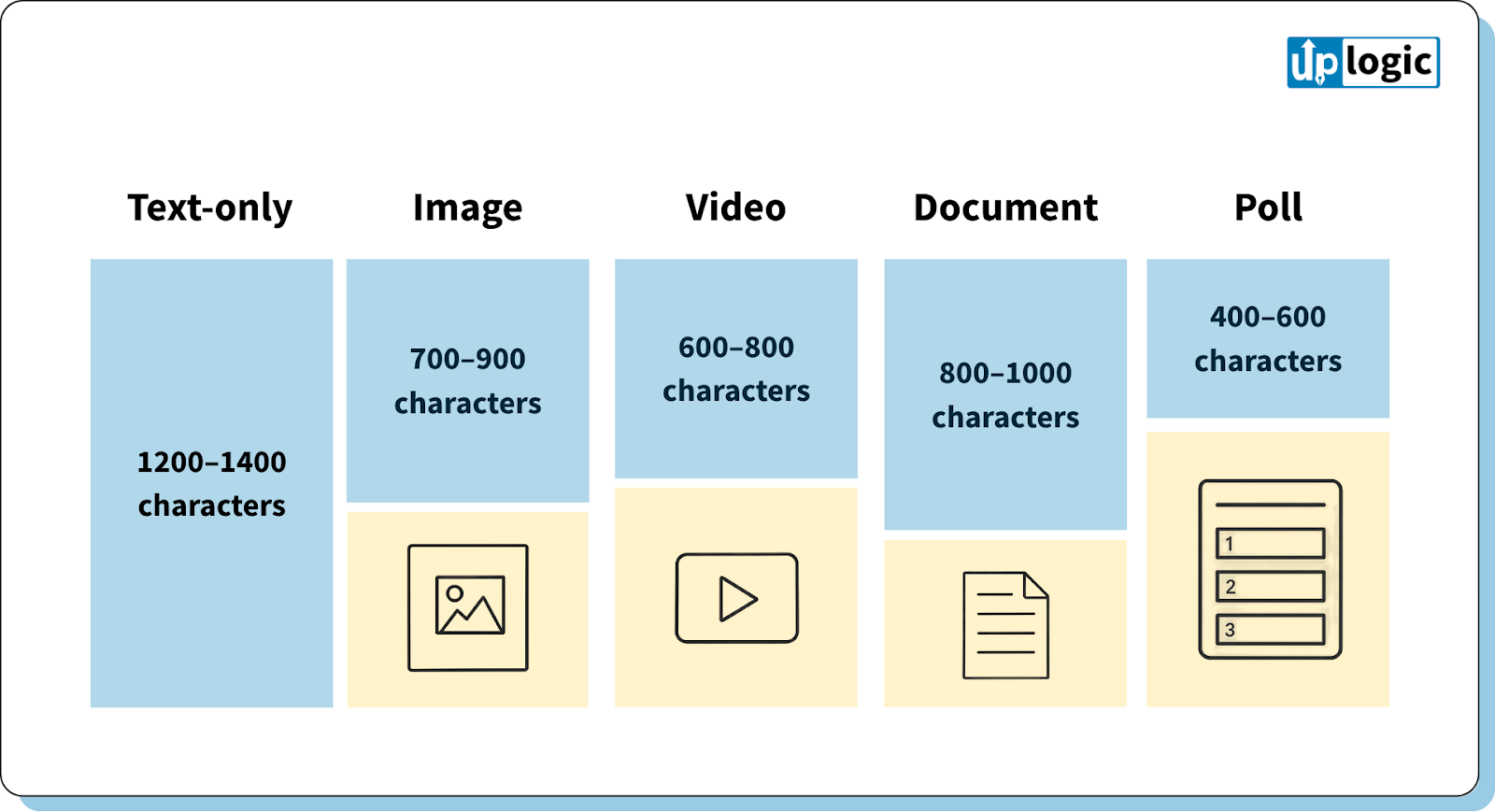
Here’s the general rule:
The more complex the attachment, the shorter the caption should be.
If your content already demands attention, your text shouldn’t fight for more.
Some topics need space. Others don’t.
Length isn’t just about format. It’s also about what you’re saying.
A personal story needs a beginning, middle, and end, it rarely works in 500 characters.
A case study takes even more space to explain context, actions, and results.
But a meme or event recap? The shorter, the better.
We looked at how different topics perform based on length, and the ranges aren’t random.
- How-to posts and lessons learned work best around 900–1,100 characters.
- Trends, predictions, and data insights tend to sit in the 1,000–1,300 zone.
- Industry news and event recaps should be kept shorter, around 800 characters.
- Memes and humor perform best when quick: 300–600 characters.
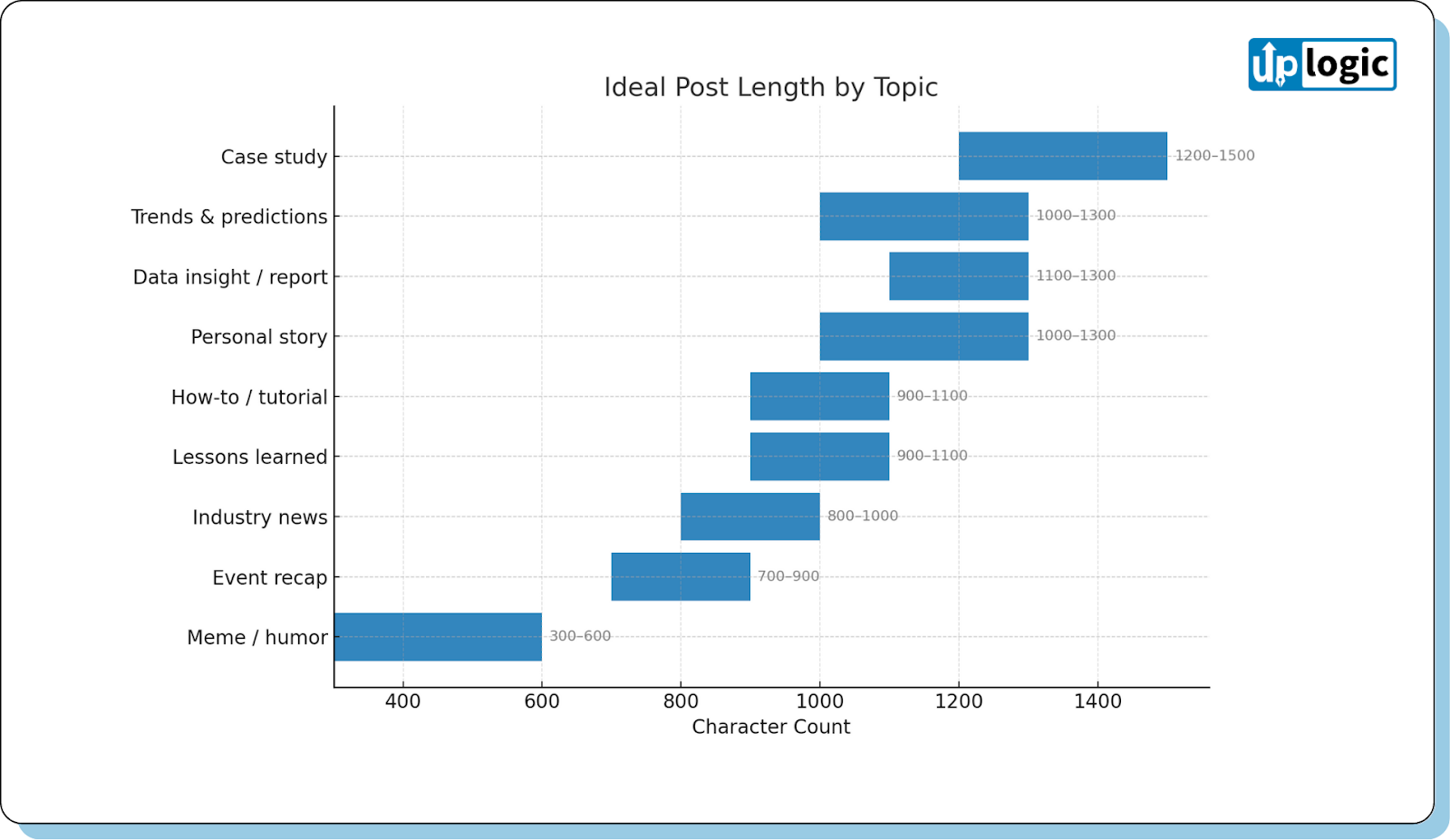
Not sure if your post is the right length?
We built a free AI tool to help you figure that out.
- Paste your draft.
- Get instant feedback
- Fix before you publish.
See you in two weeks. 👋



.png)
.svg)